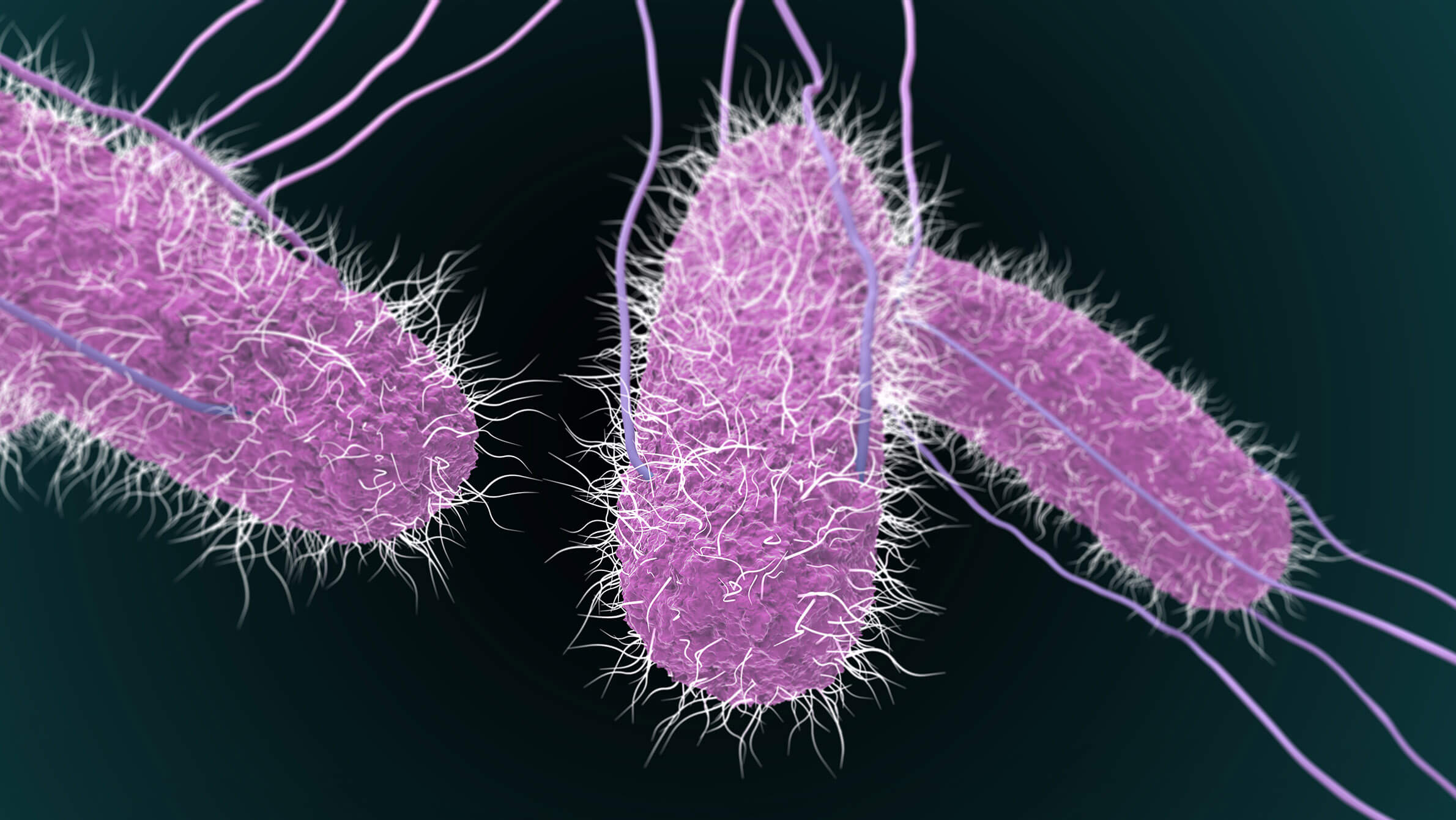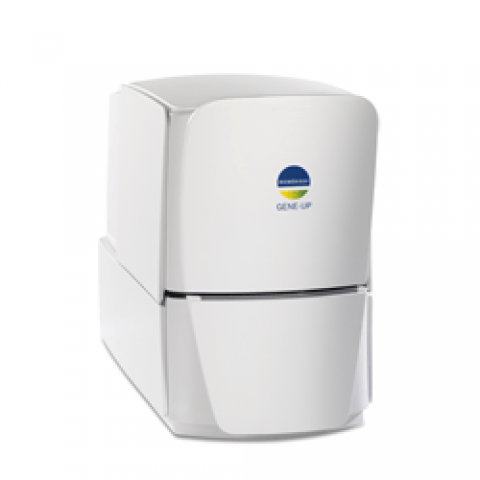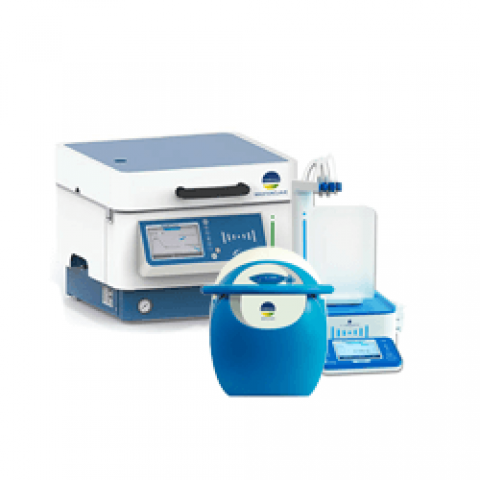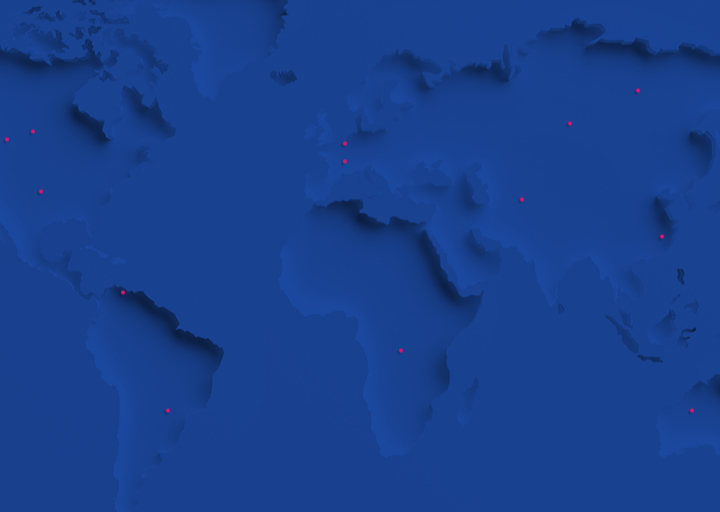식중독으로 자주 분리되는 푸드 체인 오염원 (Foodchain Contaminant)
SALMONELLA spp.란 무엇입니까?
Salmonella는 일반적인 운동성을 지니는 그람 음성의 간균으로, Enterobacteriaceae 과에 속하는 박테리아입니다. Salmonella속은 사람에게 질병(살모넬라증)을 일으킬 수 있는 두 종의 세균인 S. enterica와 S. bongori로 나뉘어집니다.
가장 큰 공중보건 위협(WHO, 2015)인 Salmonella enterica는 6개의 아종, 구체적으로는 enterica, salamae, arizonae, diarizonae, houtenae, 그리고 indica로 구성되어 있습니다.
Salmonella의 종(spp.)과 아종은 서로 다른 생화학적 특성을 바탕으로 구분할 수 있습니다(Grimont P. & Weill F.X., 2007).
Salmonella 분리종은 추가적으로 Kauffmann-White 분류법을 사용해 편모 항원(H)와 체세포 항원(O)에 따라서(Grimont P. & Weill F.X., 2007), 혹은 유전자 기반 혈청형 분류 접근법(Banerji S. et al., 2020)을 사용해 혈청형별로 분류됩니다. Salmonella spp.은 혈청형 이름으로 불리는 경우가 많습니다.
2500개 이상의 Salmonella 혈청형이 보고되었습니다(Ibrahim GM and Morin PM, 2018). 다만, Enteritidis와 Typhimurium과 같은 일부 혈청형만이 푸드체인에서 꾸준히 발견되는 분리종이며, 상당수의 식중독의 원인이 된다는 것이 입증되었습니다(EFSA & ECDC, 2021; CDC, 2021). 실제로, 염색체 또는 플라스미드 매개 독성과 항생제 내성의 결정과 주로 관련이 있는 제어 요소(Cadel-six S. et al., 2021)는 그러한 혈청형에 동물 사료, 농장의 동물, 식품업계, 식품, 그리고 인체에서의 생존과 전파에 대한 놀랄 정도로 뛰어난 능력을 줍니다(Chen R.A. et al., 2019; Huang X. et al., 2019; Guillén, S. et al., 2021).
소비자에게 있어 어떤 위험이 있습니까?
Salmonella에 감염된 건강한 사람은 주로 발열, 설사, 메스꺼움, 구토, 복통을 경험합니다. 희귀한 경우에는 혈류감염을 통해 특히 어린이나 노인, 그리고 면역력이 약해진 사람에게 더 심각한 질병을 일으킬 수도 있습니다.
치명률은 일반적으로 1%보다 적습니다. 하지만, S. Enteritidis와 같은 특정 혈청형의 치명률은 3.6%까지 높아질 수 있으며, 노인층이 특히 강하게 영향받습니다. (FDA, 2012). 다제내성 Salmonella 감염의 경우에는 건강에 미치는 영향이 훨씬 더 심각합니다(EFSA & ECDC, 2021b).
주요 수치:
2020년에 유럽연합의 인간에서의 Salmonella 보고 건수는 영국의 EU 탈퇴와 COVID-19 팬데믹의 영향으로 2007년 이후 가장 낮은 수치를 보였습니다.
인간 살모넬라증의 확인된 건수는 52,702건으로, 유럽연합의 신고율은 인구 100,000명 당 13.7건에 해당합니다. 이는 영국의 데이터를 포함하거나 포함하지 않은 2019년의 수치(인구 100,000명당 19.5건과 20.4건)와 비교했을 때 각각 29.7% 및 32.8% 감소한 것입니다. 그럼에도 불구하고 2016-2020년의 살모넬라증의 전반적인 경향성은 통계적으로 유의미한 증가 혹은 감소를 보이지 않았습니다(EFSA-ECDC, 2021).
입원으로 이어진 사례의 비율은 29.9%로 2019년보다 낮아졌으며, EU 내 사례의 치명률은 0.19%였습니다.
전반적으로 사람에서의 감염과 연관된 상위 5개의 Salmonella 혈청형은 S. Enteritidis(48.7%), S. Typhimurium(12.4%), monophasic S. Typhimurium(1,4, [5],12:i:-)(11.1%), S. Infantis(2.5%), 그리고 S. Derby(1.2%)였습니다.
도합 694건의 Salmonella 유행이 보고되어 3,686건의 질병을 초래했고, 812건의 입원, 그리고 7건의 사망을 초래했습니다. 2020년에 Salmonella는 전체 EU 식품 매개 유행의 22.5%의 원인이 되었습니다. 보고된 Salmonella 유행의 대부분(57.9%)는 S. Enteritidis에 의해 발생했습니다.
미국에서 2020년 동안에는(CDC, 2021) 2017-2019년 보고된 평균 연간 건수와 비교했을 때, 모든 병원체에 대해서 26% 적은 건수의 감염이 보고되었습니다. EU에서와 마찬가지로 COVID-19 팬데믹과 관련한 2020년의 광범위한 조치와 손씻기의 증가 등 일상생활과 위생 행동의 변화가 식품 매개 병원체에의 노출을 변화시켰을 확률이 높습니다.
2020년 미국의 전체 살모넬라증 발생률은 100,000명당 13.3건이었으며, 입원 사례의 비율은 29%, 치명률은 0.7%였습니다. 가장 흔한 7개의 혈청형은 Enteritidis(인구 100,000명당 1.6건), Newport(1.5), Javiana(1.0), Typhimurium(0.9), I 4,[5],12: i: -(0.5), Hadar(0.4), 그리고 Infantis(0.3)였습니다. 2020년 동안 발생한 유행 관련 Salmonella 감염의 대부분(73%)은 다음 3개의 혈청형에 의해 발생했습니다: Newport(35%), Hadar(21%), 그리고 Enteritidis(17%).
Salmonella spp.는 어떻게 전파됩니까?
Salmonella는 가축, 야생동물, 애완동물, 그리고 사람 등의 척추동물의 소화기관 내에서 군집을 이룰 수 있습니다. 이 박테리아는 또한 다양한 환경에서 오랜 시간 동안 생존할 수 있습니다(Chen G. et al., 2021).
분변-경구 경로 및 오염된 물의 접촉을 통해 전파됩니다. 이 박테리아는 그 뒤 고기, 관개용수(그리고 이를 통해 밭의 작물들), 토양과 곤충, 공장 설비, 손, 주방 표면과 조리기구를 오염시킬 수 있습니다(FDA, 2012).
살모넬라증은 주로 식품을 매개로 전염되지만(94 % - Scallan E. et al., 2011) 살아 있는 동물과 환경을 통한 전파 또한 잠재적인 전파원으로 판별되었습니다(Pires S.M. et al., 2011).
Salmonella spp.의 영향을 받는 식품산업에는 무엇이 있습니까?
Salmonella는 대부분의 식품 산업(1차 생산과 그 후속의 해당하는 식품 산업)에서 유의미하고 불쾌한 문제입니다. 미국에서는(IFSAC, 2021) Salmonella 질병 중 75% 이상이 7가지 식품 분류, 즉 닭고기, 과일, 돼지고기, 씨앗 채소(예를 들어 토마토 등), 기타 농산물(견과류 등), 칠면조 및 계란에 의해 발생했습니다. 유럽연합에서 식품을 매개로 한 살모넬라증 유행에 가장 흔하게 연관되었던 3개의 식품 매개는 ‘계란 및 계란 제품’, 그리고 그 뒤를 돼지고기와 제빵류가 이었습니다(EFSA & ECDC, 2021).
Enteritidis나 Typhimurium과 같은 일부 주요 혈청형은 각각 닭(Pires S.M. et al., 2011)과 돼지 사육장(Pires S.M. et al., 2011; Munk et al., 2020; Arnold et al., 2021)과 더 밀접하게 연관되어 있었습니다.
식품산업에서 Salmonella spp.를 예방하고 제어하는 방법은 무엇입니까?
푸드체인 상의 식품 사업 경영자들은 자신의 사업의 특징을 고려해 미국 및 유럽연합 규제에 의해 요구되는 대로 HACCP 기반 제어 시스템과 좋은 위생 관행 및 우수 제조 관리 기준 등을 고안하고 도입해야 합니다(FDA 21CFR 1 et al., 2015; 9CFR304 et al., 1996; EU 852/2004).
지속적으로 발견된 확률이 높은 위험요소인 Salmonella spp.는 대부분의 식품산업에서 식품의 변질을 막기 위한 HACCP 혹은 식품안전계획의 일부가 되어야 합니다(EU 178/2002; Federal Food, Drug & Cosmetic Act, 1938; FDA-FSMA, 2011). Enteritidis 및 Typhimurium과 같은 공중보건에 가장 중요한 Salmonella 혈청형의 제어를 위한 추가적인 규제 조치가 EU 및 미국에서 시행되었습니다(자세한 기사 읽어보기: Salmonella Enteritidis 및 Typhimurium factsheet).
식품업계에서 Salmonella spp.의 존재를 확인하는 방법은 무엇입니까?
EU 및 미국의 규정은 식품 사업체가 HACCP 및 GHP에 기반한 관리 절차의 효과를 검증하거나 확인할 때 적절한 미생물 검사를 수행하도록 세부적으로 규정하고 있습니다(EU 852/2004; FDA, 2011).
Salmonella spp. 모니터링은 구체적으로 i) 준수 확인 및 감시 목적으로 규제기관이 시행(EU 625/2017; FDA, 2011)하거나 ii) 관련 식품 업계에서 고객 보호뿐만 아니라 필수적인 제품 리콜(FDA, 2011; EU 178/2002)및 법적 처벌을 방지하기 위해 사업 파트너에 의해 시행됩니다.
전통적 혹은 분자미생물학적인 검사법(PCR 혹은 Whole Genome sequencing)이 Salmonella spp의 검출 혹은 Salmonella Enteritidis 또는 Typhimurium의 혈청형 구분을 위해 사용되었으며, 주된 방법으로는 다음이 있습니다:
- 표준화된 기준 검사법,
. FDA-BAM, 2021,
. USDA NPIP 기준, 2019
. MLG 4.11, 2021
. ISO 6579-1:2017 및 2020 개정, ISO TR 6579-3:2014(혈청형 구분), ISO/DTS 6579-4(1,4,[5],12, i:-).
- AOAC 혹은 EN ISO 16140-2:2016 혹은 ISO 16140-6:2019 검증된 대체 방법. 기존 방법과 비교했을 때 이러한 신속검사법은 대개 사용하기 편하며, 결과를 얻기까지의 시간을 단축해 분석 및 비즈니스 흐름의 관리에 유연성을 더해줍니다.
bioMérieux는 식품 안전 관리자들에게 푸드체인 상에서의 Salmonella spp. 혹은 S. Enteritidis & S. Typhimurium 관리를 위한 표준화되거나 검증된 검사법들을 제공합니다.
bioMérieux 솔루션 및 제품
샘플 및 배지 준비:
- DILUMAT® 샘플 희석기
- SMASHER® 샘플 분쇄기
- MASTERCLAVE® 자동 배지 제조기
전통적인 배양 배지:
- 다양한 전통적 및 일반적 배양 배지: Rappaport Vassiliadis Soy Broth, MKTTn, XLD ISO 6579
Standard 혹은 alternative methods 을 위한 Chromogenic 배양배지 :
- SALMA™(Salmonella One Day) - Salmonella spp.의 검출을 위한 선택적 배지
- chromID™ Salmonella - Salmonella 속의 선택적 분리 및 분류를 위한 발색배지
- ASAP™ - Salmonella의 분리를 위한 발색배지
공식 검증 목록: https://www.biomerieux-industry.com/products/culture-media-food-applications (페이지 하단)
신속 검출 솔루션:
VIDAS® 자동 효소형광측정법(ELFA) 식중독균 검출 플랫폼:
-VIDAS® UP Salmonella(SPT)
-VIDAS® Salmonella(SLM)
-GENE-UP® Salmonella 2
-GENE‑UP® S. Enteritidis & S. Typhimurium 키트(SEST)(Ref.423127)
식품 내 Salmonella Enteritidis 및 Salmonella Typhimurium의 검출을 위한 실시간 중합효소 연쇄 반응(PCR) 분석법
구체적인 기사 보기: SALMONELLA ENTERITIDIS AND TYPHIMURIUM: TWO MAJOR SEROTYPES RESPONSIBLE FOR HUMAN INFECTIONS
2021년 10월 19일
공식 검증 목록(VIDAS® 및 GENE-UP® 검사법용)
VIDAS KUBE
GENE-UP® - Automated food pathogen detection
(페이지 하단)
미생물 동정:
-VITEK® 2 GN
-VITEK® MS
-API® 20E, API® Rapid 20E
-ID32E, Rapid ID32E
공식 검증 목록 : https://www.biomerieux-industry.com/products/identification
(페이지 하단)
AST(항생제 감수성 검사)
ETEST
References
Arnold M. et al. Bayesian Source attribution of Salmonella Typhimurium isolates from human patients and farm animals in England and Wales. 2021. Front. Microbiol. 12:579888.
Banerji S. et al. Genome-based Salmonella serotyping as the new gold standard. Nature Research, 2020, 10:4333.
Cadel-Six S. et al. The Spatiotemporal Dynamics and Microevolution Events That Favored the Success of the Highly Clonal Multidrug-Resistant Monophasic Salmonella Typhimurium Circulating in Europe. Front. Microbiol. 2021, 12:651124.
CDC(US Center of Disease Control). Decreased Incidence of Infections Caused by Pathogens Transmitted Commonly Through Food During the COVID-19 Pandemic — Foodborne Diseases Active Surveillance Network, 10 U.S. Sites, 2017–2020. MMWR, 2021, 70(38): 5p.
CHEN G. et al. Induction of a Viable but Nonculturable State, Thermal and Sanitizer Tolerance, and Gene Expression Correlation with Desiccation-Adapted Biofilm and Planktonic Salmonella in Powdered Infant Formula. Journal of Food Protection, 2021, 84(7), : 1194–1201.<
Cheng RA. et al. Embracing Diversity: Differences in Virulence Mechanisms, Disease Severity, and Host Adaptations Contribute to the Success of Nontyphoidal Salmonella as a Foodborne Pathogen. Front. Microbiol. 2019, 10:1368.
EFSA and ECDC(European Food Safety Authority and European Centre for Disease Prevention and Control). The European Union One Health 2020 Zoonoses Report. EFSA Journal 2021;19(12):6971, 324 pp.
EFSA and ECDC. The European Union Summary Report on Antimicrobial Resistance in zoonotic and indicator bacteria from humans, animals and food in 2018/2019. EFSA Journal 2021b ;19(4):6490, 179 pp.
EU Regulation 178/2002 laying down the general principles and requirements of food law, establishing the European Food Safety Authority and laying down procedures in matters of food safety: 24 p.
EU Regulation 852/2004 on the hygiene of foodstuffs: 23 p.
EU REGULATION 625/2017 on official controls and other official activities performed to ensure the application of food and feed law. 142 p.
FDA(Food and Drug Administration). Bad Bug Book, Foodborne Pathogenic Microorganisms and Natural Toxins - Salmonella species. Second Edition. 2012: 5 p.
Federal Food, Drug & Cosmetic Act. To prohibit the movement in interstate commerce of adulterated and misbranded food, drugs, devices, and cosmetics, and for other purposes. 1938.
FDA Food Safety Modernization Act(FSMA) – Public Law to amend the Federal Food, Drug, and Cosmetic Act with respect to the safety of the food supply. 2011. 89 p.
FDA. 21CFR Parts 1, 11, 16, 106, 110, 114, 117, 120, 123, 129, 179, and 211. Food Safety Modernization Act. Current Good Manufacturing Practice, Hazard Analysis, and Risk-Based Preventive Controls for Human Food. 2015, 80(180): 55908-56168.
FDA - BAM(Bacteriological Analytical Manual) - Chapter 5: Salmonella. 2021: 24 p.
Grimont P., and Weill F.X. Antigenic Formulae of the Salmonella Serovars. 9th Edn. Paris: WHO Collaborating Centre for Reference and Research on Salmonella. 2007: 167 p.
Guillén, S. et al. Impact of the Resistance Responses to Stress Conditions Encountered in Food and Food Processing Environments on the Virulence and Growth Fitness of Non-Typhoidal Salmonellae. Foods 2021, 10, 617.
Huang X. et al. Transcriptional sequencing uncovers survival mechanisms of Salmonella enterica serovar Enteritidis in antibacterial egg white. mSphere, 2019, 4(1): 19 p.
Ibrahim GM and Morin PM. Salmonella Serotyping Using Whole Genome Sequencing. Front. Microbiol. 2018, 9:2993.
IFSAC(US Interagency Food Safety Analytics Collaboration). Foodborne illness source attribution estimates for 2019 for Salmonella, Escherichia coli O157, Listeria monocytogenes and Campylobacter using multi-year outbreak surveillance data, United States. Department of Health and Human Services, Centers for Disease Control and Prevention and U.S. Food and Drug Administration, U.S. Department of Agriculture’s Food Safety and Inspection Service. Oct 2021. 14 p.
ISO 6579-1 2017. Microbiology of the food chain — Horizontal method for the detection, enumeration and serotyping of Salmonella — Part 1: Detection of Salmonella spp.
ISO 6579-1:2017/AMD 1:2020 - Microbiology of the food chain — Horizontal method for the detection, enumeration and serotyping of Salmonella — Part 1: Detection of Salmonella spp. — Amendment 1: Broader range of incubation temperatures, amendment to the status of Annex D, and correction of the composition of MSRV and SC.
ISO/TR 6579-3:2014. Technical report - Guidance for serotyping of Salmonella spp.
ISO/DTS 6579-4(expected to be published in 2023) Microbiology of the food chain - Horizontal method for the detection, enumeration and serotyping of Salmonella - Part 4: Identification of monophasic Salmonella Typhimurium(1,4,[5],12,i:-) by polymerase chain reaction(PCR).
ISO 16140-2:2016 - Microbiology of the food chain - Method validation - Part 2: Protocol for the validation of alternative(proprietary) methods against a reference method.
ISO 16140-6:2019 - Microbiology of the food chain - Method validation - Part 6: Protocol for the validation of alternative(proprietary) methods for microbiological confirmation and typing procedures.
Munck N. et al. Application of Whole-Genome Sequences and Machine Learning in Source Attribution of Salmonella Typhimurium. Risk Analysis, Vol. 40, No. 9, 2020: 1693-1705.
Pires, S. M., et al. Technical report submitted to EFSA. Estimation of the relative contribution of different food and animal sources to human Salmonella infections in the European Union. National Food Institute, Technical University of Denmark. EFSA J., 8(8), 2011: 80 p.
Scallan E., et al. Foodborne illness acquired in the United States, major pathogens. Emerging Infectious Diseases, 2011; 17: 7–15.
USDA-FSIS 9CFR Parts 304, 308, 310, 320, 327, 381, 416, and 417. Pathogen Reduction; Hazard Analysis and Critical Control Point(HACCP) Systems; Final Rule.1996. 185p.
USDA – FSIS. MLG 4.11. Isolation and Identification of Salmonella from Meat, Poultry, Pasteurized Egg, and Siluriformes(Fish) Products and Carcass and Environmental Sponges. 2021: 19 p.
WHO(World Health Organization). WHO estimates of the global burden of foodborne diseases. Epidemiology reference group 2007-2015, 2015: 265p.








